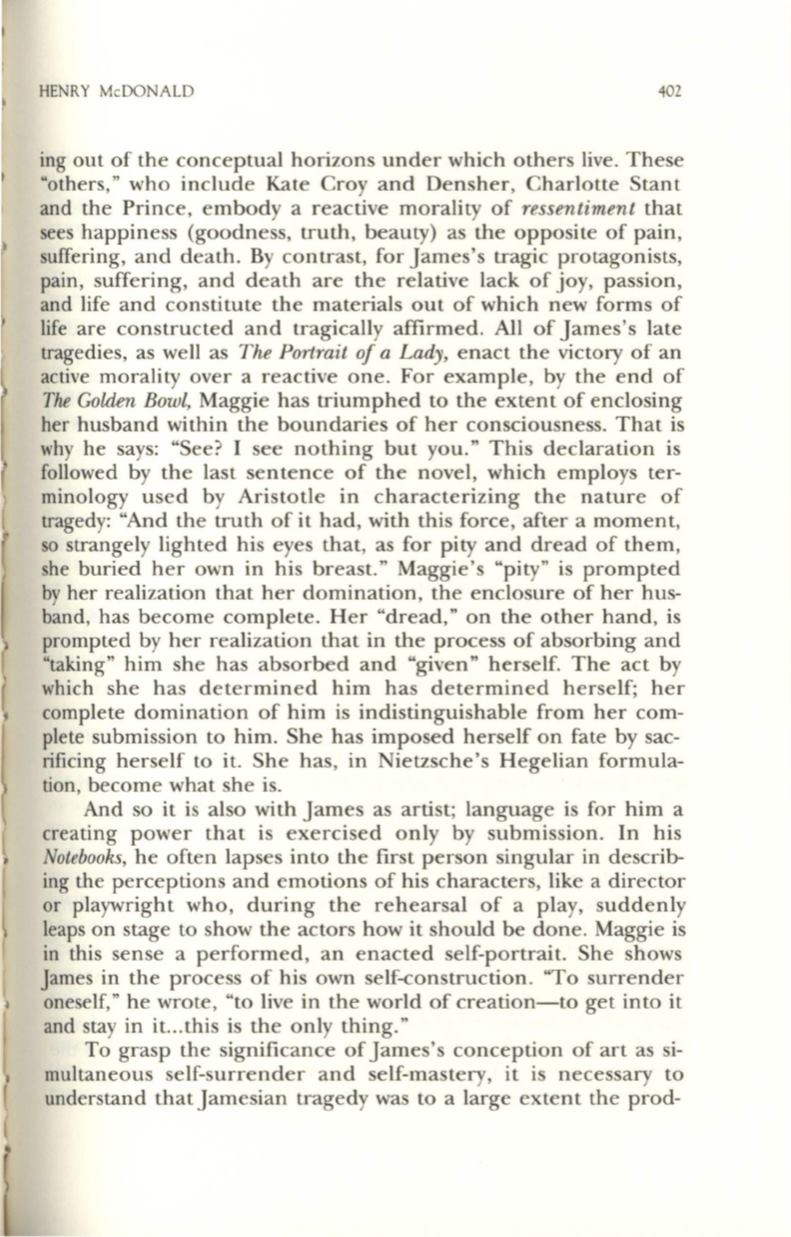
[
HENRY McDONALD
402
ing out of the conceptual horizons under which others live. These
"others," who include Kate Croy and Densher, Charlotte Stant
and the Prince, embody a reactive morality of
ressentiment
that
sees happiness (goodness, truth, beauty) as the opposite of pain,
suffering, and death. By contrast, for James's tragic protagonists,
pain, suffering, and death are the relative lack of joy, passion,
and life and constitute the materials out of which new forms of
life are constructed and tragically affirmed. All of James's late
tragedies, as well as
The Portrait of a Lady,
enact the victory of an
active morality over a reactive one. For example, by the end of
The Golden Bowl,
Maggie has triumphed to the extent of enclosing
her husband within the boundaries of her consciousness. That is
why he says: "See? I see nothing but you." This declaration is
followed by the last sentence of the novel, which employs ter–
minology used by Aristotle in characterizing the nature of
tragedy: "And the truth of it had, with this force, after a moment,
so strangely lighted his eyes that, as for pity and dread of them,
she buried her own in his breast." Maggie's "pity" is prompted
by her realization that her domination, the enclosure of her hus–
band, has become complete. Her "dread," on the other hand, is
prompted by her realization that in the process of absorbing and
"taking" him she has absorbed and "given" herself. The act by
which she has determined him has determined herself; her
complete domination of him is indistinguishable from her com–
plete submission to him. She has imposed herself on fate by sac–
rificing herself to it. She has, in Nietzsche's Hegelian formula–
tion , become what she is.
And so it is also with James as artist; language is for him a
creating power that is exercised only by submission. In his
Notebooks,
he often lapses into the first person singular in describ–
ing the perceptions and emotions of his characters, like a director
or playwright who, during the rehearsal of a play, suddenly
leaps on stage to show the actors how it should be done. Maggie is
in this sense a performed, an enacted self-portrait. She shows
James in the process of his own self-construction . "To surrender
oneself," he wrote , "to live in the world of creation-to get into it
and stay in it... this is the only thing."
To grasp the significance of James's conception of art as si–
multaneous self-surrender and self-mastery, it is necessary to
understand thatJamesian tragedy was to a large extent the prod-


